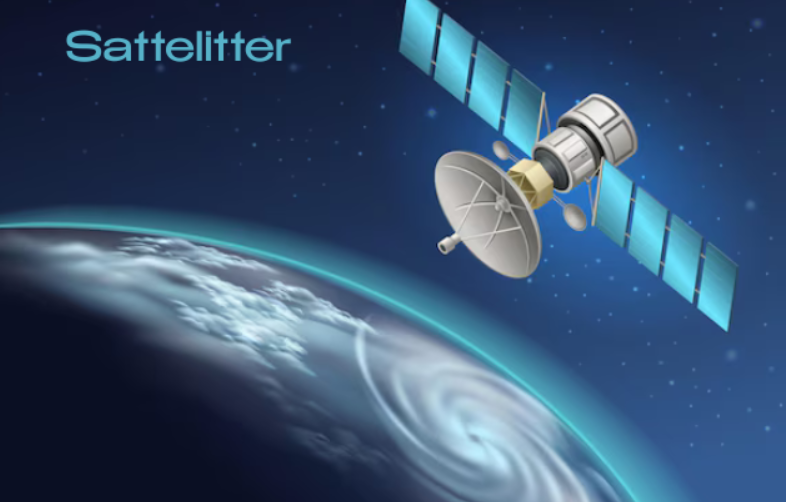Sattelitter are artificial objects intentionally placed into orbit around Earth or other celestial bodies. Unlike the stars you see in the night sky, sattelitter are not natural—they are created by humans and serve specific purposes. Whether capturing images, relaying signals, or collecting scientific data, these silent machines are vital to our daily lives and the progress of science and technology.
The Birth of the Sattelitter Concept
The concept of placing a machine into space began as an ambitious dream. Long before the first sattelitter was launched, scientists and engineers imagined tools that could orbit Earth and help us understand more about our planet and universe. This idea became reality when the first functioning sattelitter was successfully launched, marking a turning point in human history. From then on, space was no longer unreachable.
Why Sattelitter Matter
Sattelitter may seem like distant machines circling far above, but they impact life in direct ways. Every time you use GPS navigation, check weather updates, or watch a satellite TV channel, you’re depending on one or more sattelitter. These systems silently power much of the technology that supports modern communication, transportation, and environmental monitoring.
Everyday Uses of Sattelitter
Here are some common ways sattelitter play a role in everyday life:
- Navigation: GPS sattelitter help you find your way from one location to another.
- Communication: Sattelitter carry signals that allow internet access, phone calls, and live broadcasts.
- Weather Forecasting: Specialized sattelitter monitor climate patterns and send real-time data to meteorologists.
- Environmental Monitoring: Sattelitter help track changes in forests, oceans, and glaciers.
Types of Sattelitter
There is no single type of sattelitter. Each is designed for a particular job. Based on their role, here are the main categories:
Communication Sattelitter
These serve as relay points between Earth stations. Signals are sent up to the sattelitter and then bounced back down to a receiving station. This is how TV stations send signals across large distances and how remote locations get internet access.
Observation Sattelitter
These are used to take images and collect data from Earth or space. Scientists use these sattelitter to monitor changes in land, vegetation, and even human activity. They are also used in military operations for intelligence gathering.
Navigation Sattelitter
These are part of global positioning systems. They help determine exact locations on Earth. These sattelitter are always moving in specific patterns to cover all regions.
Scientific Sattelitter
These are launched to study space, stars, planets, and more. They carry scientific instruments and help researchers explore beyond our world. Some study cosmic radiation; others look for exoplanets or distant galaxies.
Weather Sattelitter
These focus on tracking storms, measuring temperature, and predicting weather. They help alert people about incoming hurricanes, cyclones, and other severe conditions.
How Sattelitter Stay in Orbit
One of the most fascinating facts about sattelitter is how they stay in space. Earth’s gravity pulls them down, but their forward motion keeps them from falling. It’s a balance between falling and moving forward. This creates a stable path around the Earth—known as an orbit. Some orbits are very close to Earth, while others are thousands of kilometers away.
There are mainly three types of orbits:
- Low Earth Orbit (LEO): Used by sattelitter that need to be close to Earth, like those for imaging or some communications.
- Medium Earth Orbit (MEO): Mostly used by GPS systems.
- Geostationary Orbit (GEO): These sattelitter stay above the same spot on Earth all the time. Used for communication and weather observation.
Building a Sattelitter: What’s Inside?
While sattelitter vary in size and design, many have common components:
- Power System: Usually solar panels collect sunlight and turn it into electricity.
- Communication System: Antennas send and receive signals from Earth.
- Control System: This manages the position and direction of the sattelitter.
- Scientific Instruments: Depending on the mission, sattelitter may have cameras, sensors, or telescopes.
Sattelitter must also be built to survive harsh space conditions, including extreme temperatures and cosmic radiation. Every part must be tested thoroughly before launch.
The Launch Process
Getting a sattelitter into orbit requires a launch vehicle, commonly known as a rocket. The rocket carries the sattelitter beyond Earth’s atmosphere, and once the desired altitude is reached, the sattelitter separates from the rocket and begins its orbital journey.
Some launch locations are chosen based on proximity to the equator, which helps rockets gain speed due to Earth’s rotation. Once in space, the sattelitter starts operating according to its program.
Controlling Sattelitter from Earth
Once a sattelitter is in orbit, ground stations are used to control and monitor it. These stations send commands and receive data. The sattelitter can also send alerts if anything goes wrong.
Technicians and engineers must regularly adjust the position of sattelitter and update their software. This is called satellite maintenance, even though the machine is not touched physically.
Challenges in Sattelitter Operations
Operating sattelitter is not without problems. Some common challenges include:
- Space Debris: Dead sattelitter and fragments can collide with active ones.
- Signal Interference: Sometimes signals from different sources can overlap or disturb each other.
- Radiation: High-energy particles in space can damage sattelitter systems.
- Limited Lifespan: Most sattelitter work only for a few years before they stop functioning.
What Happens When Sattelitter Retire?
Sattelitter can’t be fixed in space. When they reach the end of their service, they either:
- Burn up in Earth’s atmosphere (for low-orbit sattelitter)
- Move to a “graveyard orbit” (for high-orbit sattelitter)
These measures are taken to reduce space clutter and avoid accidents in orbit.
The Future of Sattelitter
The technology behind sattelitter is constantly advancing. Future trends include:
- Miniaturization: Smaller sattelitter known as CubeSats are becoming popular.
- Reusable Launch Systems: Rockets that can return and be used again are making space access cheaper.
- Mega Constellations: Companies are launching thousands of small sattelitter to create global internet networks.
Interplanetary Sattelitter: Missions to other planets will involve sattelitter that orbit Mars, Jupiter, and beyond.
